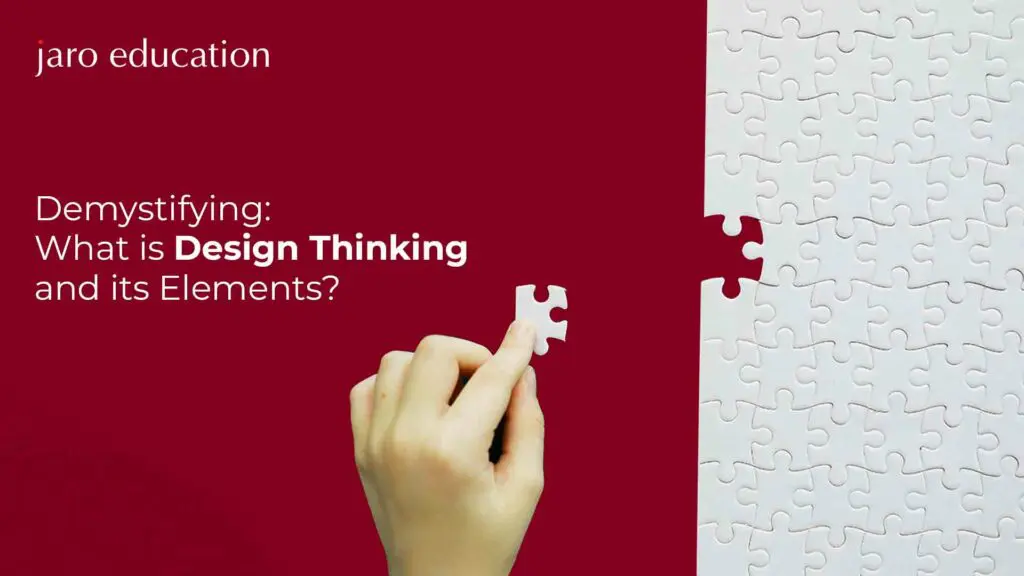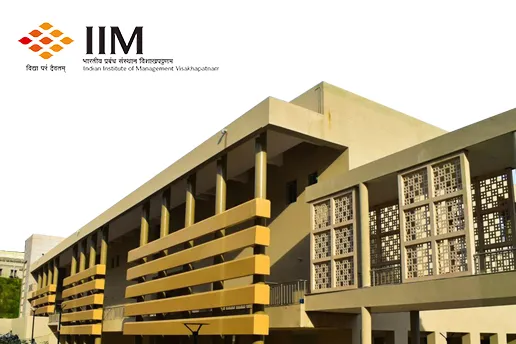
Design thinking starts by emphasising the importance of clearly describing issues and comprehending them from the viewpoint of the intended audience. Design thinkers actively encourage team members to let go of their preconceptions and previous beliefs about the demands of their target audience, in contrast to traditional methods.
Five key components make up design thinking, which serves as a framework for identifying original solutions to issues. Every stage of the design thinking process has a specific objective, which is to provide creative and valuable solutions. Understanding and utilising these elements empowers individuals to approach problem-solving with a fresh perspective and unlock new possibilities.
If you’re interested in developing your design thinking skills, IIT Delhi’s Executive Programme in Product Innovation & Design Thinking for Business Growth can be valuable. You may improve your capacity for problem-solving, encourage innovation, and make a significant contribution to your chosen field with the aid of this course.
Understanding the core of Design Thinking
It is essential to combine human demands with technical breakthroughs and economic viability in order to effectively handle difficulties. Design thinking offers a beneficial tool that enables people who may not be designers or business experts to promote original ideas and problem-solving techniques.
The initial phases in this procedure involve acting and coming up with critical questions. By deeply understanding the problem and the desired outcome, one might explore new possibilities and attack the challenge from a new angle.
This technique not only mitigates risks associated with novel ideas but also fosters the development of groundbreaking solutions.
Key Elements of Design Thinking
In the modern era, where user experience takes precedence, the 5 essential elements of Design Thinking play a crucial role in crafting exceptional products. By delving into these stages, we gain a deeper understanding of the design thinking process and its transformative power in problem-solving and innovation.
- Empathise: Understand your users’ needs through research and observation.
- Define: Clearly articulate the needs and problems of your users.
- Ideate: Challenge assumptions and generate innovative ideas.
- Prototype: Begin creating tangible solutions.
- Test: Experiment and gather feedback on your solutions.
Let’s explore each stage of the design thinking process, unravelling its essence:
Empathise
Empathy holds immense significance in problem-solving and the human-centred design process, enabling design thinkers to transcend their own assumptions and gain genuine insights into users and their needs.
In this stage, depending on time constraints, a substantial amount of information is gathered to be utilised in the subsequent stages.
The primary objective of the Empathise stage is to cultivate a comprehensive understanding of users, their needs, and the underlying problems related to developing the desired product or service.
Define
This phase serves as the culmination of insights gathered during the Empathise stage, encompassing the entire duration of this phase. Utilising the obtained information, you and your team will assess and synthesise it to determine the most crucial concerns to be addressed.
The objective is to articulate the problem through a problem statement that reflects the priorities of all stakeholders involved.
Within the Define phase, the design thinkers in a team will generate ingenious ideas and develop new capabilities to tackle the identified problems. Moreover, an emphasis will be placed on enabling users to easily voice their concerns throughout the program’s development, fostering a user-centric approach.
Ideate
In the third stage of design thinking, designers enter the ideation phase. After gaining insights about users and their needs in the Empathise stage and formulating a user-centric problem statement in the Define stage, the team can explore the problem from various perspectives and generate innovative solutions.
During ideation, techniques like Brainstorm, Brainwrite, Worst Possible Idea, and SCAMPER can be employed. Brainstorm and Worst Possible Idea techniques are often used initially to encourage free thinking and expand the problem space, facilitating the generation of numerous ideas.
Prototype
In the prototyping phase, the design team creates cost-effective, scaled-down versions of the product to explore the key solutions generated during ideation. These prototypes are shared and tested within the team, other departments, or a small external group.
This phase serves as an experimental stage, aiming to identify the optimal solutions for the problems identified in the earlier stages. The solutions are implemented within the prototypes and systematically evaluated based on user experiences.
Each solution is investigated, accepted, improved, or rejected one by one, refining the design based on user feedback.
Test
In the final stage of the design thinking process, designers or evaluators conduct thorough testing of the complete product using the best solutions identified in the Prototype stage.
While this marks the end of the five-stage model, design thinking embraces an iterative approach. Besides, the results often lead to redefining one or more additional problems.
This increased understanding allows a deeper exploration of usage conditions and user thoughts, behaviours, and emotions towards the product. It may even prompt a return to a previous stage in the design thinking process.
Through further iterations, alterations, and refinements, alternative solutions are systematically ruled out to enhance the final product.
Bottom Line
Design thinking is a collaborative process that fosters innovation by aligning designers and users. By understanding and empathising with users’ thoughts, emotions, and behaviours, design thinking generates solutions that precisely resonate with their needs.
The five core stages of design thinking—Empathise, Define, Ideate, Prototype, and Test, provide a structured framework for problem-solving. However, it is essential to recognise that these stages are not strictly linear. The iterative and non-linear nature of design thinking allows for simultaneous execution, repetition, and the possibility of revisiting previous stages throughout the process.
Where to Learn More?
Embracing design thinking empowers individuals and design teams to tackle complex challenges. It unlocks creativity and helps deliver impactful solutions.
To further enhance their understanding and skills in this field, professionals have the opportunity to enroll in the Executive Programme in Product Innovation & Design Thinking offered by CEP IIT Delhi. Registering in this programme through Jaro Education can open up a comprehensive curriculum that delves into the principles, methodologies, and practical applications of design thinking in driving business growth and fostering product innovation.
By participating in this programme, aspirants can deepen their knowledge, gain hands-on experience, and develop the capabilities to apply design thinking effectively in real-world business contexts.






